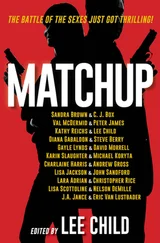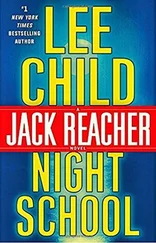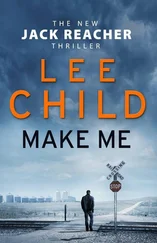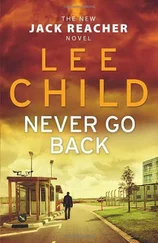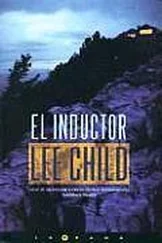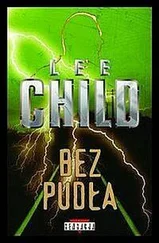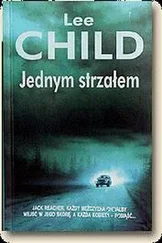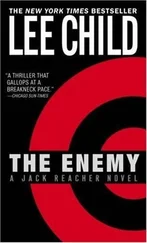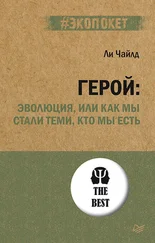The judge regarded the two detectives, his gaze direct. “How can I help you gentlemen?”
“We need to ask you a few questions about the Dolan case,” Martinez said.

UNDER THE SPEEDY Trial Act, a criminal defendant has the right to go to trial within seventy days of his indictment or his initial court appearance, whichever comes first. If the trial doesn’t begin within that period, the charges are dismissed.
Overworked defense attorneys usually ask for, and are readily given, extensions. But occasionally the system logjams, with too many trials and not enough judges to hear them. When that happens, the presiding judge requests that the civil bench jurists assist their criminal colleagues. Civil proceedings are delayed while judges used to hearing securities-fraud claims and divorces preside over robbery and assault trials instead.
This judge had been drafted for such a criminal proceeding two weeks ago. Kenny Dolan was charged with second-degree murder for allegedly stabbing his wife during a domestic dispute. The case had gotten some pretrial coverage in the local press — Dolan was a catcher on the resident minor league team with a real chance of moving up to the big leagues.
The evidence of Dolan’s guilt seemed insurmountable — his fingerprints on the knife, blood spatter on his shoes, his 911 call that was more a confession than a plea for help — but in the middle of the trial, it was revealed that one of the cops assigned to the investigation, an old bull named Borosovsky, had been convicted of planting evidence in another case. Despite a vigorous closing by the prosecutor and absolutely no indication of police misconduct in Dolan’s case, the taint couldn’t be eradicated in some jurors’ minds. After four days of deliberations, the jury had hung, nine to three in favor of conviction.
“Speaking off the record, I believe Mr. Dolan was guilty.” The judge made a face. “Never underestimate the power of celebrity, no matter how minor.”
“Too bad you couldn’t’ve done one of those JN-whatevers,” Martinez said.
“I assure you, I would have entered the order in a heartbeat,” the judge said.
“The way it turned out …” Ebanks said.
“Justice was done,” the judge said briskly.
After the jury failed to reach a verdict, the judge had dismissed them and concluded the trial. During his posttrial press conference, the prosecutor vowed to retry Dolan. He’d wanted Dolan returned to jail pending the filing of new charges. But the baseball player’s lawyer had argued that his client should be released on bond, and the judge had agreed. It all became moot two days later when Dolan was discovered dead at his lake house. The coroner hadn’t released his final report yet, but the blogosphere had reported the furnace in Dolan’s house had been leaking carbon monoxide.
Ebanks looked over at the tray of fly-tying paraphernalia. The judge noticed.
“Do you fish, Detective?”
“Not so much anymore,” Ebanks said.
“How can you live without it? I get up to the lake every weekend. You should’ve seen the rainbow I caught the day after the Dolan trial — it was at least a foot long.”
“Hmmm,” Ebanks said. “So you tie your own flies?”
“I do.” The judge held up his finger to display a Band-Aid. “Although it has its hazards.”
“Like everything else,” Ebanks said. He checked his watch. “You know, we’re not focusing on Kenny Dolan right now.”
“I don’t understand,” the judge said.
Ebanks nodded at Martinez. The rookie said, “One of the trial jurors was killed.”
“Oh?” the judge said. “Which one?”
Martinez looked toward Ebanks again, and the older detective nodded once more.
Martinez consulted his notebook.
“Eric Shadid. He didn’t even make it to the hospital. The car that hit him was going pretty fast. Witnesses said it aimed right for him, didn’t brake, and bam! ”
The judge furrowed his brow in concentration. “Mr. Shadid was the foreman, wasn’t he?”
“Right,” Martinez said.
“When did this happen?” the judge said. “Why didn’t I hear about it?”
“A day after the trial ended,” Ebanks said. “It didn’t make the news.”
“I would have missed it anyway. I’m always at the lake house after a trial.” He grimaced. “This time it was a damn good thing I got up there so fast. There was a burst pipe in the laundry room. I fixed it myself — a foot of half-inch pipe, some solder, a propane torch, and about two hours of labor.” He turned to Martinez. “So you think this hit-and-run is related to the Dolan trial?”
“Maybe,” Martinez said. “At first we just figured Shadid was in the wrong place at the wrong time.”
“What changed your mind?”
Martinez looked embarrassed. “That magazine writer called.”
“Writer?” the judge said.
“Leonard Lunney. He’s one of those true-crime guys. Said he was writing about the Dolan trial. He got a copy of the jury list and started calling ’em to see if they’d talk. When he found out Shadid thought Dolan was innocent from the get-go and then Shadid’s killed in that hit-and-run …”
“Journalists are rightly skeptical of coincidence,” the judge said.
“Police too,” Ebanks said.
“I’ve read some of Mr. Lunney’s pieces in Vanity Fair, ” the judge said. “It’s his job to spin the suspicious into the sensational.”
“According to Lunney, the first vote was eleven to one to convict,” Martinez said. “Shadid was the holdout. He ended up getting two other jurors to go along with him.”
“I’ve seen some heated deliberations,” the judge said. “That one was among the most acrimonious. I could hear the shouting in my chambers. The bailiff had to break up a scuffle at one point.”
“You catch what the fight was about?” Martinez said.
“From what I heard, a juror in favor of conviction accused Mr. Shadid of being blinded by Dolan’s status as an athlete.” The judge spread his hands. “Of course you’ll talk to the rest of the panel.”
Ebanks frowned. “You’re thinking maybe a juror who argued with Shadid wanted to kill him because Shadid thought Dolan was innocent?”
The judge looked at Ebanks over the top of his glasses. “Remember Jack Ruby? People have done worse in the name of justice, especially when they have some tangential involvement in the situation.”
“The thing is, we checked into that,” Martinez said. “All the jurors had alibis for when the car hit Shadid.”
“So if a juror isn’t a suspect, I’m not sure how I can help you,” the judge said.
“We’d like to ask you about Mrs. Dolan’s family,” Martinez said. “Specifically, her brothers.”

THE PROSECUTOR, AS usual, had made a point of extolling the victim’s virtues at trial. Tina Lucchese Dolan was a loving wife who supported her husband’s baseball career, cheerfully moving from town to town as he worked his way up from Class-A to Double-A to Triple-A ball. She sang at church and did volunteer work.
Tina’s only blemish was her maiden name. The Luccheses were a second-tier New Jersey crime family. Dolan’s lawyers, trying to create reasonable doubt, made some noise about Tina’s death being payback for a sanitation-contract dispute, but that’s all it was — noise. They didn’t have any evidence to back up their claims, only innuendo, largely in the form of Tina’s two brothers, who attended the trial every day. They sat in the first row behind the defense table and glared daggers at Kenny Dolan’s back, tough guys stuffed like sausages into shiny suits. No one would sit next to them.
Читать дальше



